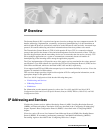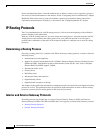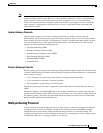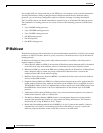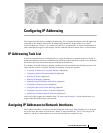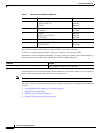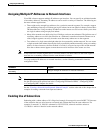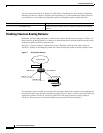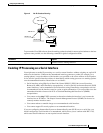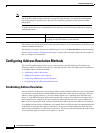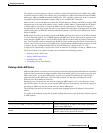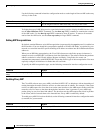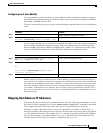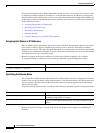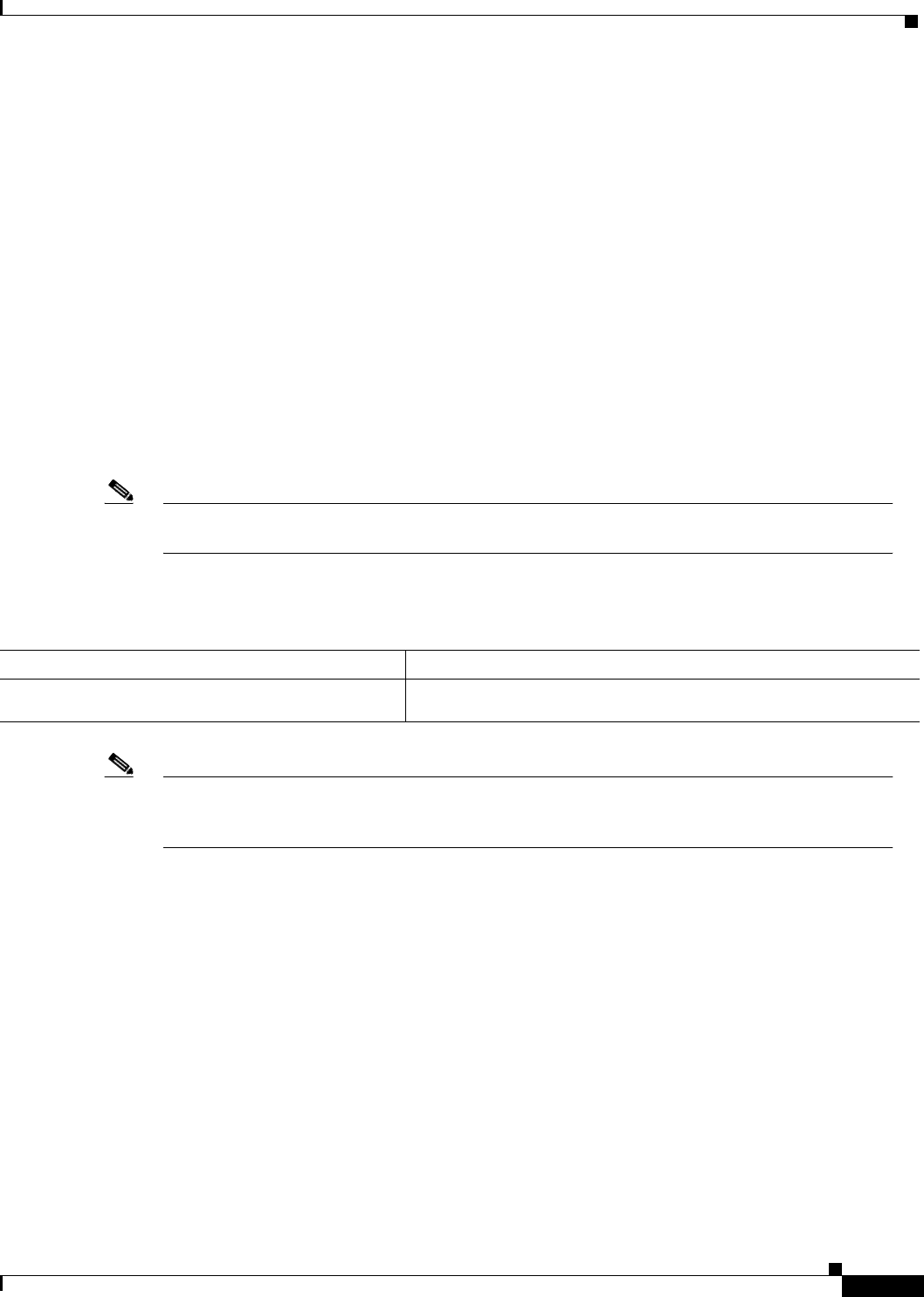
Configuring IP Addressing
Assigning IP Addresses to Network Interfaces
IPC-9
Cisco IOS IP Configuration Guide
Assigning Multiple IP Addresses to Network Interfaces
Cisco IOS software supports multiple IP addresses per interface. You can specify an unlimited number
of secondary addresses. Secondary IP addresses can be used in a variety of situations. The following are
the most common applications:
• There might not be enough host addresses for a particular network segment. For example, suppose
your subnetting allows up to 254 hosts per logical subnet, but on one physical subnet you must have
300 host addresses. Using secondary IP addresses on the routers or access servers allows you to have
two logical subnets using one physical subnet.
• Many older networks were built using Level 2 bridges, and were not subnetted. The judicious use of
secondary addresses can aid in the transition to a subnetted, router-based network. Routers on an
older, bridged segment can easily be made aware that many subnets are on that segment.
• Two subnets of a single network might otherwise be separated by another network. You can create
a single network from subnets that are physically separated by another network by using a secondary
address. In these instances, the first network is extended, or layered on top of the second network.
Note that a subnet cannot appear on more than one active interface of the router at a time.
Note If any router on a network segment uses a secondary address, all other routers on that same segment
must also use a secondary address from the same network or subnet.
To assign multiple IP addresses to network interfaces, use the following command in interface
configuration mode:
Note IP routing protocols sometimes treat secondary addresses differently when sending routing updates.
See the description of IP split horizon in the “Configuring IP Enhanced IGRP,” “Configuring IGRP,”
or “Configuring RIP” chapters for details.
See the “Creating a Network from Separated Subnets Example” section at the end of this chapter for an
example of creating a network from separated subnets.
Enabling Use of Subnet Zero
Subnetting with a subnet address of 0 is illegal and strongly discouraged (as stated in RFC 791) because
of the confusion that can arise between a network and a subnet that have the same addresses. For
example, if network 131.108.0.0 is subnetted as 255.255.255.0, subnet 0 would be written as
131.108.0.0—which is identical to the network address.
Command Purpose
Router(config-if)# ip address ip-address mask
secondary
Assigns multiple IP addresses to network interfaces.



